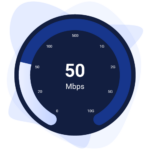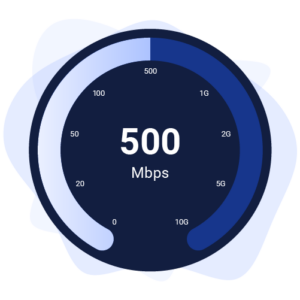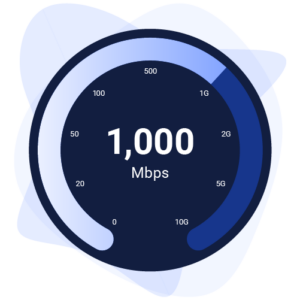Best fiber internet providers
-
Best overallGoogle Fiber
- Best customer service
- Simple billing
- Multi-gig speeds
- Speeds: 1,000–8,000Mbps
-
Best budget plansVerizon
- Low-cost options
- Bundle options
- Speeds: 300–8,000Mbps
-
Best starting priceCenturyLink
- Fast baseline plan
- Router and installation included on up to 940Mbps plan
- Speeds: 500–940Mbps
-
Most reliableAT&T Fiber
- Low network downtime
- Multi-gig speeds
- Speeds: 100–5,000Mbps
-
Fastest tested speedBrightspeed
- Fast average speed
- No data caps
- Speeds: 200-2,000Mbps
Data as of 2/27/2025. Offers and availability may vary by location and are subject to change.
Google Fiber is (or will soon be) available in dozens of cities across the U.S. Google Fiber began with a single city in 2010 and quickly expanded to cities across the country. At the time of its announcement, 1Gbps (1,000Mbps) was about 100 times faster than the average residential internet speed.
Google Fiber was the provider that made fiber-to-the-home a realistic possibility, and it’s still pushing the boundaries of what home internet could be.
Verizon’s fiber internet is available in states along the East Coast, from Virginia to New York. Verizon’s fiber internet offers a wide range of speeds, from a respectable 300Mbps to blazing-fast download speeds of up to 8,000Mbps, which is more than enough for any household.
AT&T has a much wider range of fiber plans and coverage areas, with plans starting at 100Mbps and going all the way up to 5,000Mbps. Even the slowest of these plans is more than enough for multiple people to stream 4K video simultaneously, so you might find that a cheaper plan is plenty for your needs.
Brightspeed is a smaller provider with a growing fiber network. It had the highest average speeds of any provider on the HighSpeedInternet.com speed test.
Why choose fiber internet?
Besides being the cool, cutting-edge technology for accessing the internet, fiber offers a lot of very tangible benefits that other internet technologies can’t match. The main advantages of fiber are its high download speeds, symmetrical upload speeds, reliability, and scalability.
Since fiber connects entire continents with billions of internet users, it should come as no surprise that fiber is the fastest choice for connecting your home and all your devices. Most fiber plans offer 1Gbps (1,000Mbps) speeds, with Google Fiber testing out speeds up to 20Gbps!
Cable connections can also reach gigabit download speeds, but uploading on a cable connection achieves only a fraction of those speeds. Fiber, on the other hand, has symmetrical upload and download speeds. This means that if you can download at 1Gbps, you can upload at 1Gbps as well.
Fiber connections don’t just have the highest advertised speeds; they also maintain those speeds more reliably than other connections. Fiber doesn’t suffer from the same slowdown you get on cable, DSL, or wireless networks. Plus, it requires less maintenance than many of these technologies, which means less downtime.
Fiber is certainly the best internet you can get right now, but it’s also the best option when looking to the future. Fiber networks scale easily, and fiber speeds are increasing much faster than any other internet technology.
What’s a good internet speed?

- Works best for 1–4 people
- Can check email, browse, make video calls
- Streaming video on one device
- Available on subsidized internet plans

- Works best for 5–7 people
- Good for downloading large files
- HD streaming on multiple devices
- Typically costs around $30/mo.

- Works best for 8–10 people
- Good for downloading large files fast
- 4K streaming on multiple devices
- Typically costs around $50/mo.

- Works best for 10+ people
- Can easily perform most online tasks
- Can handle as much streaming as you want
- Typically costs around $70/mo.
Fiber Internet FAQ
Gigabit internet is any internet connection that can transfer one gigabit of data per second (1Gbps or 1,000Mbps). A bit is a single piece of internet data, and a gigabit is one million bits.
Fiber-optic internet transmits information as pulses of light. The inside of a fiber-optic tube acts like a mirror, bouncing the light off the inside walls and down the tube toward its destination. Since information is literally moving at the speed of light, you can move a lot of data really fast.
Yes, 10Gbps internet is extremely fast. In fact, for most households, it’s probably more speed than you could possibly use at any given time, so you might be able to get an identical experience and save money with a lower-cost plan.

